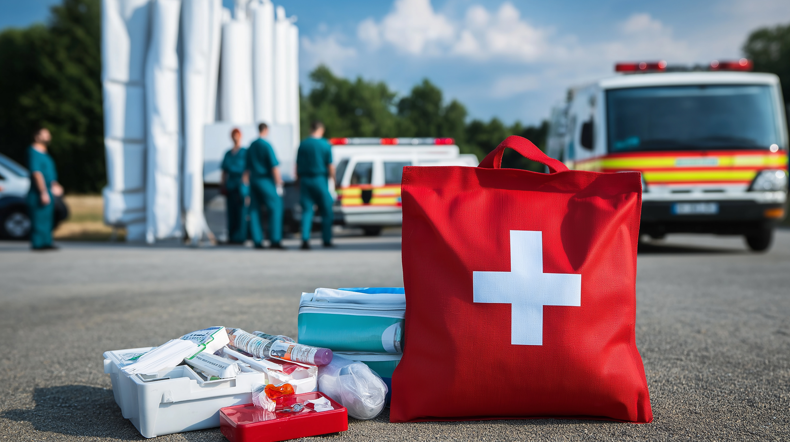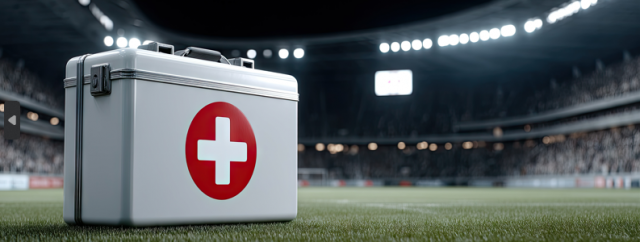Large crowds, long hours, and high energy often define successful events. These same factors also increase the risk of medical emergencies. Without proper planning, an unexpected incident can halt your event, hurt your guests, and damage your reputation.
Many organizers overlook the need for professional medical support. They assume basic first aid is enough or believe emergencies won't happen. This assumption leaves attendees vulnerable and exposes you to legal and financial risks.
When planning your event, prioritize health and safety alongside logistics and entertainment. Reliable event medical services reduce emergency response time and improve outcomes. This article explains how to choose the right provider, ensuring every guest is protected and every detail is covered.
Assess Your Event's Unique Medical Needs
Start by reviewing the number of expected attendees. A larger crowd requires more medical coverage. Long events need sustained support, including shifts for medical teams. Shorter events might need only a small standby crew.
Next, consider the type of event you're organizing. A concert may need more on-site responders due to crowd density and movement. A sports event might need orthopedic care or trauma readiness. A corporate event may require minimal staff unless high-risk activities are involved.
Think about the venue and environmental factors. Outdoor locations increase the chance of weather-related issues. Events involving alcohol or strenuous activity raise the risk of injuries or dehydration. Identify these elements early to match the medical service to your event's actual needs.
Understand the Different Types of Medical Services Available
Different events need different levels of medical care. First aid responders handle minor issues like cuts or heat exhaustion. Emergency Medical Technicians (EMTs) provide basic life support, including CPR and oxygen administration.
Paramedics offer advanced care. They manage cardiac events, breathing problems, and severe trauma. On-site physicians deliver full clinical oversight and can handle complex emergencies on location. Their presence is often needed at large, high-risk events.
Smaller events may only need first aid responders or EMTs. Larger gatherings should have paramedics or doctors available. Some may require mobile units or treatment tents.
So, when looking for providers of event medical services, always ask what they bring. Some teams carry defibrillators, oxygen tanks, or trauma kits. Others may bring mobile treatment stations and communication gear. Match your event's size and risk level to the right mix of professionals and tools.

Verify Licensing and Certification of Medical Providers
Medical staff must hold valid licenses for their roles. EMTs, paramedics, and physicians must meet current certification requirements. Always request proof of qualifications before signing a service agreement.
Check if the provider has links to nearby hospitals or regional EMS. These connections speed up transfers in emergencies. Strong affiliations also mean better access to resources and expertise during the event.
Every state and local area has its own medical regulations. Ensure the provider knows and follows all applicable laws. This includes staffing ratios, equipment standards, and reporting duties.
Unlicensed or poorly trained providers increase risks. They also expose you to legal problems. Working only with certified teams protects your guests and shows responsible planning. Review documentation carefully to avoid gaps in compliance and accountability.
Ensure Clear Communication and Integration With Your Event Team
Medical teams must have tools for instant communication. Radios, phones, and headsets help coordinate fast responses. Delays happen when responders can't share updates in real time.
The medical crew should work closely with security and event staff. Coordination ensures everyone knows their role during an emergency. Shared briefings before the event help align all teams.
Build an emergency response plan that covers every scenario. Include steps for medical incidents, crowd control, and evacuation. Define who gives orders, who supports, and how updates are shared.
Include clear routes for emergency exits and ambulance access. Everyone should know where medical tents and equipment are. When medical and event teams are in sync, responses become faster and more effective.
Good communication keeps your event safe and controlled at all times.
Consider Response Time and Coverage Points
Plan staffing based on your expected crowd size. Larger events need more medical staff to ensure fast response. Most providers follow standard ratios to guide the number of responders per attendee.
Place medical tents in areas with high visibility and easy access. Set up near main entrances, central gathering spots, and stages. Roaming responders can cover gaps between fixed points and move quickly.
Ask about average response times within similar venues. Delays can worsen injuries or illnesses. The provider should know how to navigate your event layout and reach patients fast.
Map the venue with coverage zones marked. Make sure no area is left unsupported. Test routes during setup to identify any obstructions or slow zones. Good coverage planning keeps care close and cuts wait times.
Conclusion
Dependable event medical services require careful thought, planning, and the right partnerships. You've now reviewed what to look for and what to avoid. These steps help ensure your guests are safe and your event runs without disruption.
As your event nears, take a final moment to evaluate your readiness. Imagine an emergency happening on-site. Quick, effective care can prevent harm, reduce panic, and protect your reputation. Strong preparation is not optional—it's essential.
Beyond hiring medical personnel, hold a pre-event emergency drill. Include your team, vendors, and volunteers. This test reveals weak spots and improves coordination. A few hours of planning can make a critical difference when timing matters most. Prioritize safety, and your event will stand out for the right reasons.






